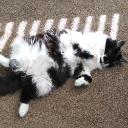Yahoo Clever wird am 4. Mai 2021 (Eastern Time, Zeitzone US-Ostküste) eingestellt. Ab dem 20. April 2021 (Eastern Time) ist die Website von Yahoo Clever nur noch im reinen Lesemodus verfügbar. Andere Yahoo Produkte oder Dienste oder Ihr Yahoo Account sind von diesen Änderungen nicht betroffen. Auf dieser Hilfeseite finden Sie weitere Informationen zur Einstellung von Yahoo Clever und dazu, wie Sie Ihre Daten herunterladen.
How do anthropologists know whether skeletons of ancient humans were male or female?
You read any anthropological literature and they'll refer to a skeleton as male or female but they can't possibly know. Perhaps that individual they erroneously call male identified as a female. These anthropologists obviously know nothing about science and they're just hate filled cis transphobes.
9 Antworten
- Anonymvor 2 WochenBeste Antwort
Ancient humans knew they were male or female and stayed that way.
- Godless GazooLv 7vor 2 Wochen
There are several ways. The easiest to see if the pelvis of a female is much more open for childbirth. But you can tell even from just a skull.
- CarolOklaLv 7vor 2 Wochen
Adult emales have wider hips than adult males . There is also DNA and chemical.analysis,
Sometimes more than one person's bones are are used to make a skeleton.
Don't project and transfer your ignorance onto other people.
- Wie finden Sie die Antworten? Melden Sie sich an, um über die Antwort abzustimmen.
- frombrumLv 7vor 2 Wochen
Pelvis and brow ridge difference
But I'm sure a very few are wrong but why does that matter
- Anonymvor 2 Wochen
That depends.
For non Christian anthropologists they examine the pelvis and skull.
Christian anthopologists count the ribs, then give up because both sexes have the same number. It is at this point they hand it over to real scientists.
- Anonymvor 2 Wochen
A skeleton's overall size and sturdiness give some clues. Within the same population, males tend to have larger, more robust bones and joint surfaces, and more bone development at muscle attachment sites. However, the pelvis is the best sex-related skeletal indicator, because of distinct features adapted for childbearing. The skull also has features that can indicate sex, though slightly less reliably.





